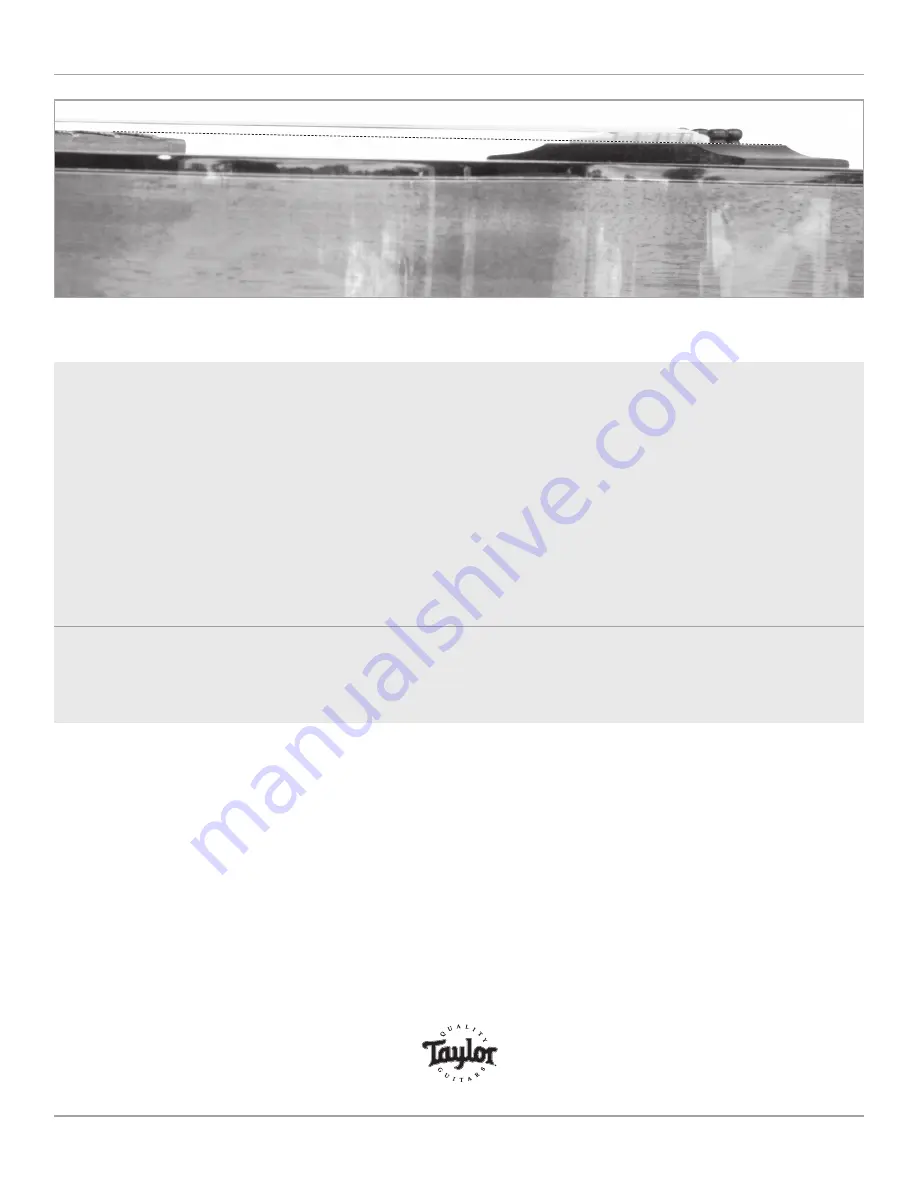
1980 G
i l l e s p i e
W
ay
• e
l
C
a j o n
, Ca 92020-1096 • 800-943-6782
Copyright 2010 Taylor Guitars. All Rights Reserved.
S Y M P T O M S O f A W E T G U I TA R
TAY L O R G U I TA R S T E C H S H E E T / P A G E 2
O f
2
Photo 8. The top of the frets are on the same plane as the top of the bridge. This is the correct adjustment for the neck.
Symptoms to look for:
1. High action. Strings that are unusually high off the fretboard,
making it difficult to play.
3. Unusually swollen top. See Photo 2.
4. Unusual warp on the top, back or both at the end-block. See Photos 1 and 2.
5. Improper neck angle. Sighting the neck to the bridge, the frets will appear
to hit below the bridge. See Photo 6.
NOTE: All guitars will have a certain amount of “pull” behind the bridge.
This alone is not an indication of a wet guitar. Look for a combination of
these symptoms to determine if the guitar is getting too humid.
In wet areas, prevention is best:
1. Periodically remove the guitar and blow-dry the interior of the
case
with a
hair dryer for 10-15 minutes.
2. Use a small de-humidifier in the room where you store your guitar. It’s also
wise to monitor the humidity levels with a digital hygrometer. Radio Shack
offers these.
3. Place several silica gel packs in the guitar case and change them every few
months.
4. Consider using the Planet Waves Humidipak® (available through TaylorWare).
Featuring two-way humidity control technology, the breathable membrane
packets will automatically maintain a relative humidity level of 48 percent by
absorbing excess moisture in humid environments.
A note on Taylor laminate guitars:
The Taylor 100 Series, 200 Series, Baby Taylor and Big Baby models feature a laminate back and sides with an arched back. The arch is by design and allows us to
add strength to the guitar body without bracing the back. Don’t be alarmed by the sight of the back arch on these models.




















